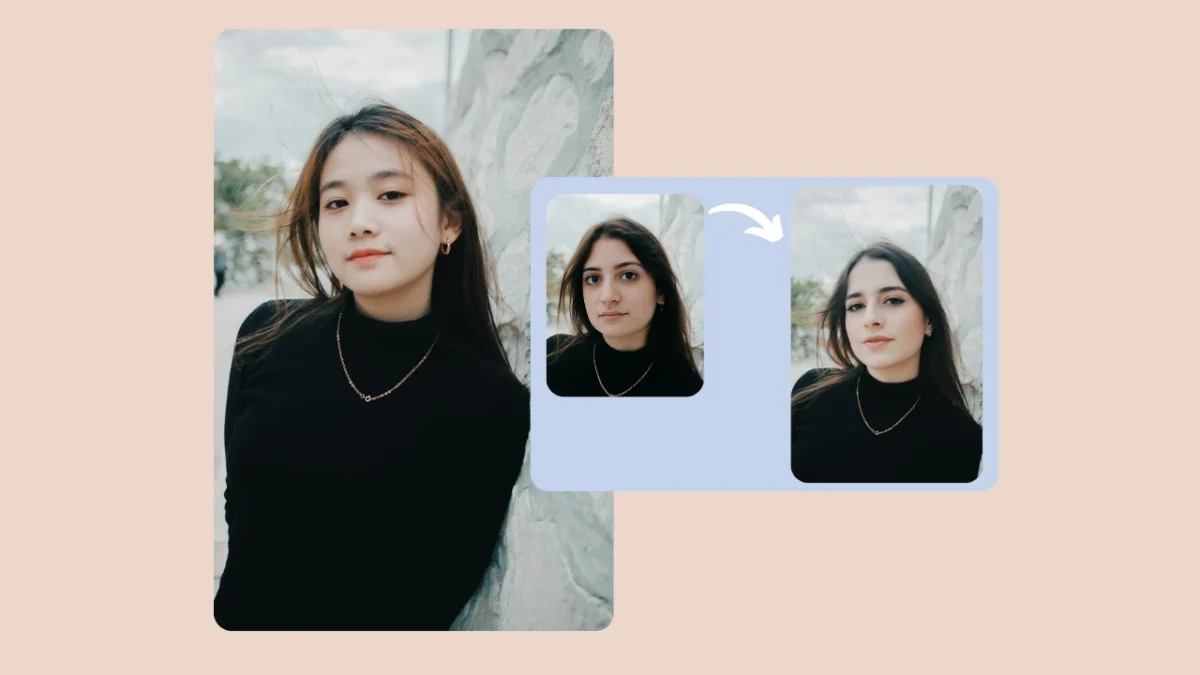Face changing refers to the AI-driven process of replacing or transforming facial identities in images or videos while preserving realism, lighting, and emotion. As visual content creation scales across social media, Ecommerce, and digital marketing, face changing technology is becoming essential for faster creative production and visual testing. PiktID’s Swap and Anonymize workflows bring a production-grade approach to face changing — combining photo real results, reusable synthetic identities, and API automation for enterprise and creator use.
This guide covers practical applications of face changing with PiktID: from step by step studio work flows and API integrations to quality control check lists and privacy best practices. Readers will also learn how to measure ROI from pilot projects and implement ethical standards for identity transformation.
Try PiktID Swap — 10 free credits on Studio.
Unlike most consumer grade tools (Reface, Canva) focused on quick entertainment, PiktID bridges the gap with professional grade accuracy, privacy, and reproducibility for modern creative pipelines.
1. What is Face Changing?

Face changing is the process of digitally transforming or replacing a person’s face in an image or video using AI. It combines techniques such as face swap, face replacement, expression re-targeting, and identity anonymization to create realistic, context aware visuals. These techniques can modify identity while preserving the original lighting, skin tone, and facial expression for seamless results.
Common applications of face changing include creating viral content for social media, generating consistent model visuals for Ecommerce, producing editorial composites for fashion and media, and building anonymized datasets for research and AI training.
AI plays a crucial role by automating complex manual editing steps like color blending, facial alignment, and texture preservation. Instead of manually adjusting each image, AI models handle these details with near human precision, drastically improving turnaround time and quality.
Insert face changing tools often prioritize entertainment and instant results, while production tools like PiktID focus on control, precision, and trust — essential for professional grade creative teams and brands managing identity sensitive projects.
Read more about how to swap faces in photos.
2. What a High-Quality Face Changing Tool Must Deliver
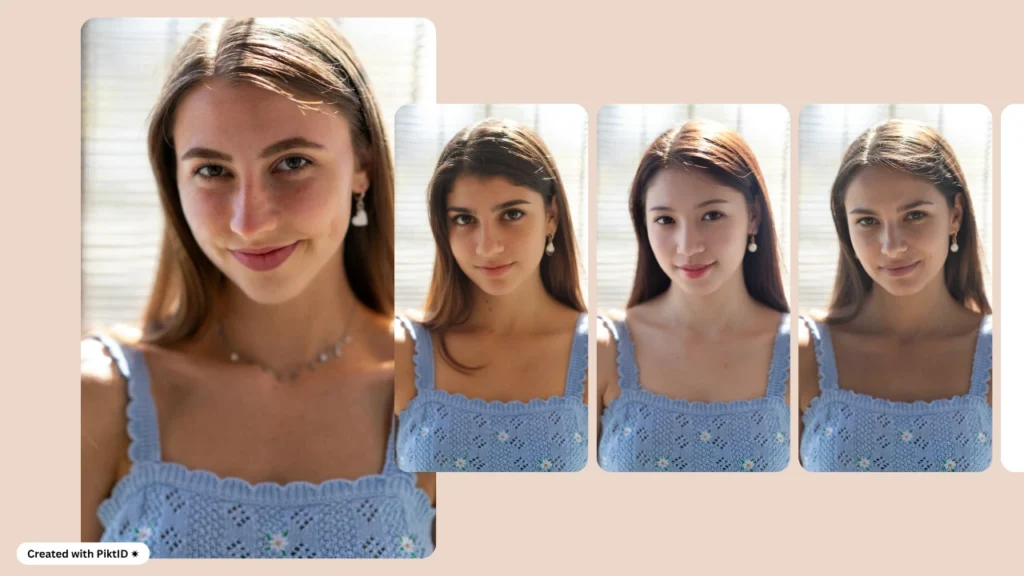
A reliable face changing solution must balance realism, consistency, and privacy. Below is a check list of key benchmarks every high quality tool should meet:
- Photo realism: The face changing process should preserve natural lighting, skin micro texture, and specular highlights for a lifelike finish. Over-smoothing or mismatched tone breaks immersion and reduces production value.
- Hair & Boundary Blending: Seamless merging around the hairline, neck, and shoulders ensures that the swapped face feels integral to the image. PiktID’s blending engine adapts to different hairstyles and lighting conditions for flawless integration.
- Expression & Gaze Continuity: Subtle features such as smiles or eye direction define realism. An advanced face changing tool must maintain consistent emotion and gaze alignment across multiple outputs.
- Reproducibility: Professional workflows require repeatability. With PiktID’s stored identities and swap seeds, users can reproduce identical face changing results for campaigns or re-shoots, maintaining consistency across visuals.
- Scale & Automation: Batch processing, APIs, and webhook automation enable businesses to perform large scale face changing operations efficiently, without manual intervention.
- Privacy & Compliance: Ethical use is paramount. An effective face changing platform includes anonymization options, ephemeral data handling, and consent based workflows to protect personal identity.
In short, the next generation of face replacement app—like PiktID—doesn’t just alter visuals; it transforms the entire creative process by combining automation, realism, and responsible AI principles.
3. Competitive Landscape — Strengths and Gaps in Top Tools

The face changing market has rapidly evolved with the rise of AI-powered editing tools designed for both consumers and professionals. Each major platform offers unique benefits, yet key limitations emerge when applying these tools for commercial or production level use. Below is an analysis of leading tools and why PiktID’s face changing work flow stands apart.
Reface (consumer, mobile first):
Reface gained mass appeal with its viral videos and GIF-based swaps that deliver instant entertainment. It’s ideal for users who want quick, fun, and shareable results. However, its consumer orientation limits its usefulness for professional applications. The app lacks enterprise grade privacy safeguards, controlled identity storage, and the ability to maintain realistic lighting and composition across multiple assets — all crucial for consistent, high quality face changing in brand campaigns.
Canva (creator tool):
Canva’s new face swap and face changing features make editing simple for social media creators. The tool integrates seamlessly into its existing design environment, which is ideal for influencers and content teams creating quick posts or thumbnails. However, it’s not built for advanced workflows that require high fidelity consistency. Canva doesn’t offer identity reuse, anonymization, or batch level editing capabilities — making it insufficient for large scale face changing operations, such as fashion look books or marketing pipelines.
DeepSwap.ai provides strong realism and supports both photo and video swaps, appealing to professionals who need accurate face changing results. Its deep learning models produce impressive likeness and emotion retention. However, DeepSwap’s subscription model and lack of ethical and privacy transparency have raised concerns. Brands seeking compliant workflows or anonymized identity handling cannot rely on this tool for GDPR-safe use cases.
Pixlr (web editor):
Pixlr is a quick, web based editor that makes casual face changing accessible to anyone. Its drag and drop simplicity suits hobbyists or marketers working on one-off images. However, Pixlr doesn’t support enterprise APIs, identity storage, or lighting consistency tools — essential for campaigns that require brand level precision.
Other web tools and hobbyist editors:
Numerous online tools offer instant AI face changing, but their results are inconsistent. Artifacts, hairline mismatches, and tone disparities often reduce output quality. These tools prioritize speed over control and don’t provide the data security or scalability businesses demand.
Choosing the right tool for you
Most top consumer tools excel at speed, accessibility, and virality — perfect for entertainment, but not production. PiktID’s AI photo face swap fills this gap by combining identity storage, anonymization, API integration, hair flag control, and batch swap functionality. This makes it the preferred choice for creators, Ecommerce brands, and studios who need precise, ethical, and repeatable AI-driven face replacer across campaigns and catalogs.
4. PiktID Product Primer: Swap + Anonymize

Swap is PiktID’s core face changing engine that enables users to replace faces in photos with AI while maintaining natural texture, lighting, and expression. It’s designed to deliver photo realistic results, even in group shots or challenging lighting environments. Users can control parameters like hair preservation and tone matching, ensuring every face swap aligns perfectly with the original composition. The result is a seamless visual where the replaced face blends naturally with surrounding features — ideal for catalog photos, ad shoots, and creative experiments. See Swap Studio.
Anonymize complements Swap by enabling privacy safe workflows. It replaces real identities with AI-generated synthetic faces while retaining realistic human traits. Once anonymized, these synthetic identities can be stored and reused in future projects — a major breakthrough for GDPR compliance and creative flexibility. Brands can use anonymize for testing models, protecting talent privacy, or producing editorial imagery without needing repeated photo shoots. See Anonymize Docs.
How They Work Together
The real power of PiktID’s face changing system comes from the integration of Swap and Anonymize. The workflow is simple yet transformative:
- Anonymize or create an AI model identity once.
- Store that identity securely for consistent reuse across projects.
- Swap the stored identity onto multiple product photos, campaign visuals, or video thumbnails — ensuring consistent look and style across your catalog.
This identity based face changing approach streamlines creative production, reduces reshoot costs, and guarantees brand consistency. With PiktID, businesses can achieve scalable, ethical, and visually cohesive face changing for all their creative and commercial needs.
Do more than swapping faces, learn how to use PiktID’s AI Clothes Swap.
5. Step-by-Step: How to Change a Face in Photos
This section explains exactly how to use PiktID’s AI tools for seamless face changing in photos — without any technical setup or coding. It’s designed for content creators, Ecommerce teams, or studios looking to enhance visuals with professional grade face replacement and identity management.

A. Prep: Capture & Choose Images
Before starting the face changing process, the quality and alignment of your images matter most.
- Target image (the photo where you’ll replace the face):
Use a clear, well lit image with minimal shadows or obstructions (avoid sunglasses or heavy accessories). The best results come from frontal or ¾ angle shots where the face is clearly visible.
Tip: Choose images at least 1024 × 1024 resolution for sharper results. - Source face (the image whose face you want to apply):
Match the expression and angle as closely as possible to the target. For example, if the target subject is smiling slightly and facing right, use a source photo with similar lighting and expression.
This alignment ensures the AI produces a natural and photo realistic face changing result.
B. Upload & (Optional) Anonymize
- Go to PiktID Studio → Swap Tool.
- Click Upload Target Image to import your main photo.
- (Optional) Run Anonymize — this replaces the original face with a synthetic identity.
- Why this matters:
- Privacy: Protects the identity of real people while allowing full editing control.
- Consistency: You can store these synthetic identities and reuse them across future sessions for consistent branding or model reuse.
- Why this matters:
Using Anonymize before starting the face changing process helps maintain compliance with data protection norms while enabling creative freedom.
C. Upload or Select Identity
Next, decide which face you want to apply:
- Upload a new source image:
Simply drag and drop an image containing the desired face. - Or select a stored identity:
If you’ve previously created synthetic models using the Anonymize tool, choose one from your Stored Identities Gallery.
This allows quick and consistent face changing across multiple campaigns, shoots, or Ecommerce listings — perfect for scaling creative work flows.

D. Configure Generation Options
Fine-tune the face changing process to get realistic, production grade results.
- flag_hair:
Set to “true” to blend hair and head features from the source face. Set to “false” if you want to retain the target’s hairstyle. - prompt_strength / similarity:
Adjust between 0.6 – 0.9 to control how closely the output follows the source identity versus the original image. Lower values keep more of the target image; higher values make a stronger swap. - seed:
Use a seed number for repeatability — this ensures that multiple generations of the same parameters yield consistent outputs. - watermark (Pro feature):
Toggle watermark settings for client or internal review stages.
Example configuration prompt:
{
"flag_hair": true,
"prompt_strength": 0.85,
"seed": 42
}
This setup produces balanced, natural face changing results while retaining environmental realism.
E. Generate, Review, Iterate
Once settings are in place:
- Click Generate — PiktID’s AI will process the face changing operation within seconds.
- Review your results in the History tab.
- Use quick troubleshooting if needed:
- Hair halo or edge blur: Try lowering prompt_strength slightly or enable flag_hair.
- Skin tone mismatch: Re-upload both images with similar lighting or use post generation tone correction.
- Expression distortion: Ensure both images share a similar expression and angle.
Iterate as needed to achieve the perfect natural look. Every generation is logged for easy side by side comparison.
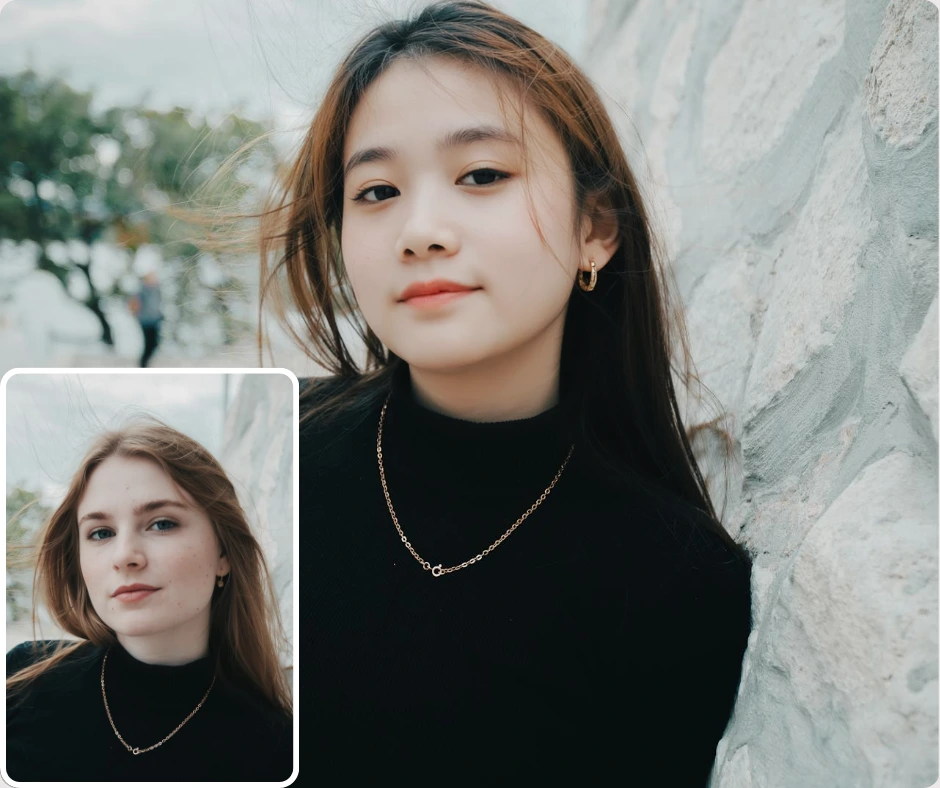
F. Export & Housekeeping
Once satisfied with your face changing results:
- Click Download to export the final image.
- Review temporary retention policies — generated files are stored briefly for user access but should be downloaded for long-term use.
- Save key versions in organized folders by project, model identity, or campaign.
For teams managing multiple projects, maintaining a consistent naming convention helps track outputs efficiently.
Using PiktID’s AI-powered face changing work flow, you can transform, anonymize, or recreate visuals in minutes. The combination of Anonymize, Stored Identities, and Swap ensures privacy, precision, and repeatability — redefining how creators and studios produce professional quality images at scale.
6. Developer Implementation: Swap via API
Integrating AI-based face changing capabilities into your product can be seamless and scalable with the PiktID Swap API. This section explains how developers can implement automated face changing pipelines — from uploading images to managing large scale jobs — with performance and consistency in mind.
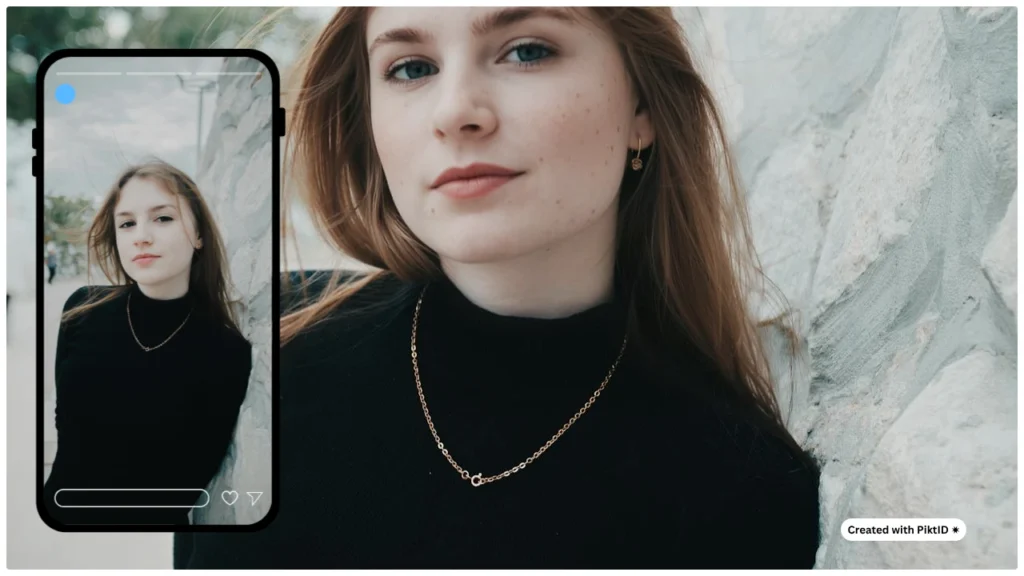
High-Level Architecture & Flow
The core face changing work flow follows a structured four step sequence:
- Upload Target Image — The target photo (the image where the face will be changed) is uploaded using the upload_target endpoint.
- Upload Face or Reuse Stored Identity — Either upload a new face via upload_face or reference a previously stored identity using the identity_name parameter. This is useful for recurring brand shoots or standardized AI model generation.
- Generate — Initiate the face changing process with the generate endpoint, including relevant options for lighting, similarity, and tone preservation.
- Poll Notifications — The system issues notifications on job progress. Developers can query these using a short polling cycle until completion, then download the final image.
Still stuck? Read our guide about our AI Face Swap API.
Example Python Implementation
Below is an annotated example demonstrating how to use the Swap API for automated face changing.
import requests
import time
# Step 1: Upload target image
target_resp = requests.post(
"https://api.piktid.com/upload_target",
headers={"Authorization": "Bearer YOUR_API_TOKEN"},
files={"file": open("target.jpg", "rb")}
)
target_id = target_resp.json()["target_id"]
# Step 2: Upload or reference stored face
face_resp = requests.post(
"https://api.piktid.com/upload_face",
headers={"Authorization": "Bearer YOUR_API_TOKEN"},
files={"file": open("face_source.jpg", "rb")}
)
face_id = face_resp.json()["face_id"]
# Step 3: Generate swapped image
payload = {
"identity_name": "model_001",
"id_image": target_id,
"id_face": face_id,
"options": {
"lighting_match": True,
"flag_hair": True,
"similarity": 0.95
}
}
gen_resp = requests.post(
"https://api.piktid.com/generate",
json=payload,
headers={"Authorization": "Bearer YOUR_API_TOKEN"}
)
job_id = gen_resp.json()["job_id"]
# Step 4: Poll for completion
for _ in range(10):
time.sleep(10)
status = requests.get(
f"https://api.piktid.com/notifications/{job_id}",
headers={"Authorization": "Bearer YOUR_API_TOKEN"}
).json()
if status.get("completed"):
result_url = status["result_url"]
output = requests.get(result_url)
open("output_face_changed.jpg", "wb").write(output.content)
break
This flow demonstrates a robust approach for AI-based face changing at scale, ensuring each operation is traceable, repeatable, and secure.
Best Practices
- Polling Frequency: Use 8–10 second intervals to balance performance and network load.
- Notification Management: Notifications expire after 10 minutes — process or store them quickly.
- Reproducibility: Use seed parameters to maintain identical results across test runs.
- Batch Job Orchestration: For 100+ images, enqueue requests using an asynchronous queue (e.g., Celery, Redis Queue) with retry logic for failed jobs.
- Secure Token Handling: Store your API keys securely using environment variables or encrypted vaults. Never expose them in client-side code.
By following this workflow, developers can integrate professional grade face changing into any Ecommerce, photography, or content automation platform with minimal over head.
7. Quality Control (QC) Checklist & Troubleshooting Matrix
Even with advanced AI, achieving natural and seamless face changing results requires careful review and minor tuning. Below is a check list and troubleshooting reference to ensure the best possible outputs before publishing.
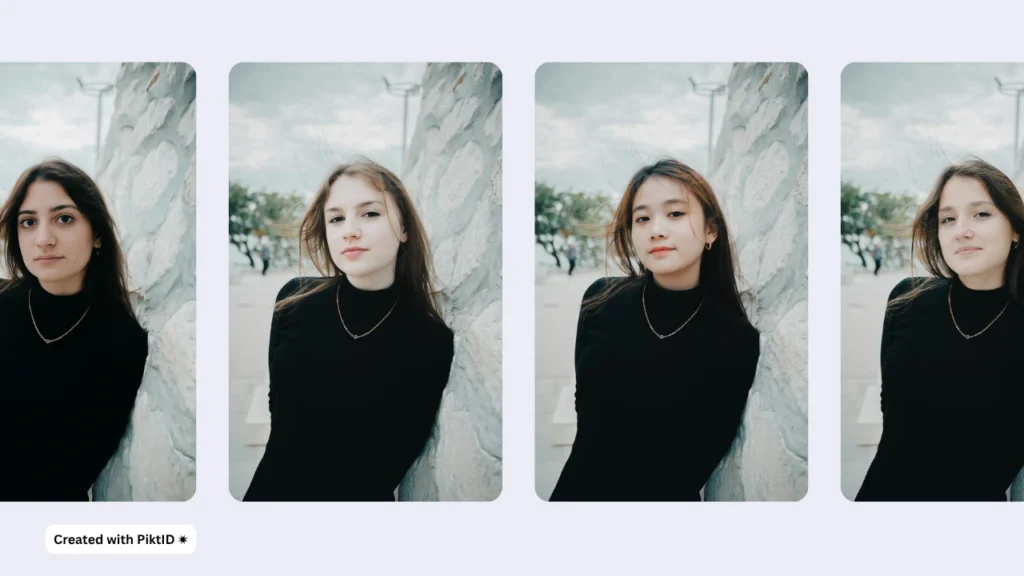
Pre-Publish Quality Checklist
- Hairline Blend: Ensure the new face’s hairline aligns naturally with the target head shape.
- Neck and Shoulder Shadows: Verify shadow continuity to avoid visible mismatches.
- Corneal Catchlight: Check if reflections in the eyes are consistent with the lighting source.
- Color Balance: Maintain a natural skin tone transition between swapped and original regions.
- Edge Artifacts: Look for visible seams near jawlines or ears — slight blurring can help.
- Expression & Gaze: The new face should maintain consistent expression and direction for realism.
Troubleshooting Matrix
| Symptom | Likely Cause | Recommended Fix |
| Hair appears “floating” | Missing hair segmentation or low similarity threshold | Enable flag_hair=True and increase similarity value |
| Skin tone mismatch | Lighting inconsistency between images | Adjust lighting parameters or use tone-preserving prompts |
| Expression looks unnatural | Misaligned pose or extreme emotion difference | Use neutral expressions or similar pose references |
| Blurred or stretched output | Low-resolution inputs or upscaling artifacts | Provide higher-quality sources or enable upscaling mode |
| Eyes misaligned | Perspective conflict between face and target | Use front-facing or similarly angled photos |
Consistent review of these QC parameters ensures professional grade outputs for face changing work flows — ideal for commercial campaigns, creative mock ups, and social media visuals.
By combining the PiktID Swap API with careful post processing checks, teams can scale their face changing operations while maintaining quality and brand realism at every step.
Read more about Face Swap Technology.
8. Comparison Table — PiktID vs Top Consumer & Pro Tools
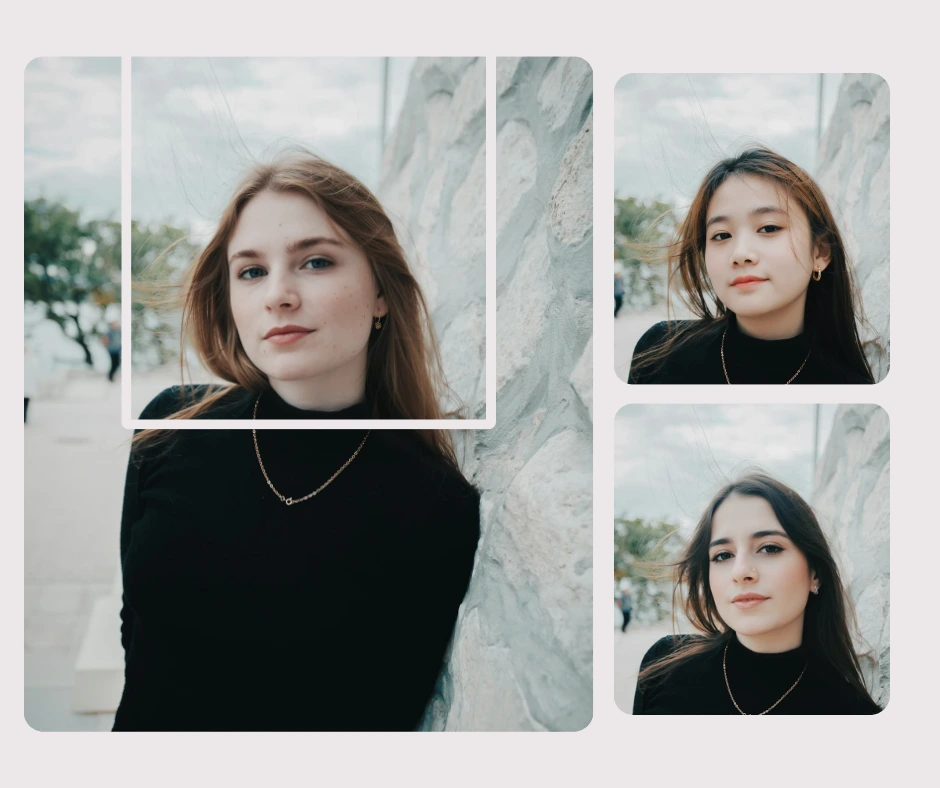
When it comes to face changing technology, not all tools are built the same. Many consumer apps focus on entertainment or simple filters, while PiktID’s approach centers around accuracy, privacy, and professional grade automation. Below is a comparison of how PiktID’s Swap and Anonymize tools perform against popular alternatives such as Reface, Canva, DeepSwap, and Pixlr.
| Platform | Photo realism | Privacy / Anonymize | Ease of Use | Ideal Audience |
| PiktID (Swap + Anonymize) | Ultra-realistic with tone & lighting consistency | Advanced anonymization + identity storage | Very easy (browser-based) | Creators, studios, brands |
| Reface | Moderate (entertainment-grade) | Basic privacy only | Very easy | Social users, casual creators |
| Canva | Basic (filter-based edits) | Depends on user handling | Very easy | Designers, marketers |
| DeepSwap | High realism but limited customization | No anonymize tools | Moderate | General users |
| Pixlr | Low (manual photo editing) | User-dependent | Moderate | Basic editors |
Why PiktID wins:
PiktID combines enterprise level control with consumer simplicity. Unlike standard face changing tools, PiktID’s integrated Anonymize feature allows users to create and store reusable digital identities that can be safely applied across multiple photos. This makes it ideal for fashion brands, studios, and creators who need consistent faces in different settings—without redoing shoots or violating privacy.
While Reface or DeepSwap emphasize quick entertainment, using PiktID’s body swap AI, which delivers a production grade face changing experience—photo realistic lighting, fine hair integration, and secure data handling with API scalability.
9. Ethics, Privacy & Legal Best Practices
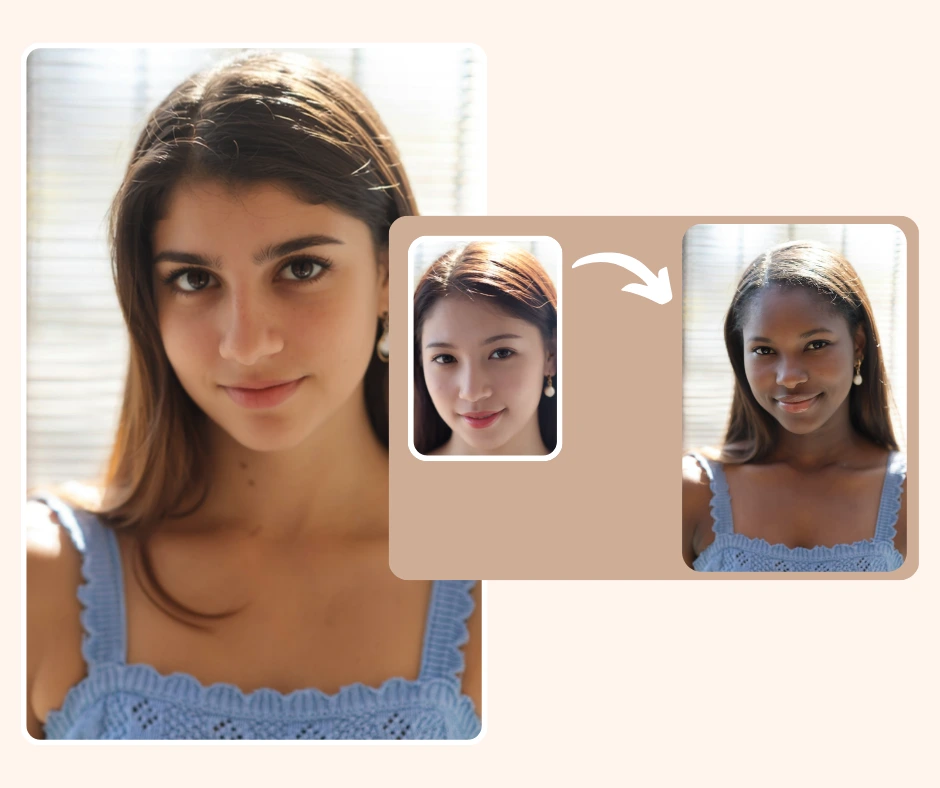
As face changing technology evolves, responsible use becomes essential. Whether for marketing campaigns, film production, or creative testing, users should ensure that face swaps are both ethical and compliant with privacy laws.
Core best practices:
- Consent: Always obtain permission from individuals whose likeness is used.
- Disclosure: Identify synthetic or AI-generated content when used in public materials.
- No impersonation: Avoid using AI face changing for misleading or defamatory purposes.
- Documentation: Maintain model release forms and consent records for commercial use.
Technical & policy safeguards:
PiktID provides built in tools to help users maintain compliance. The Anonymize feature replaces identifiable data with AI-generated models, preserving visual quality while protecting real identities. Each generated image retains provenance metadata, ensuring traceability. The platform also includes watermarking options for public facing images and automatic deletion of originals under its retention policy.
Recent global discussions and news coverage around deepfake misuse highlight the importance of conservative policies in AI-driven face changing. By integrating ethical design principles, PiktID ensures creative freedom doesn’t come at the cost of privacy or authenticity.
10. Sign up at PiktID’s Studio
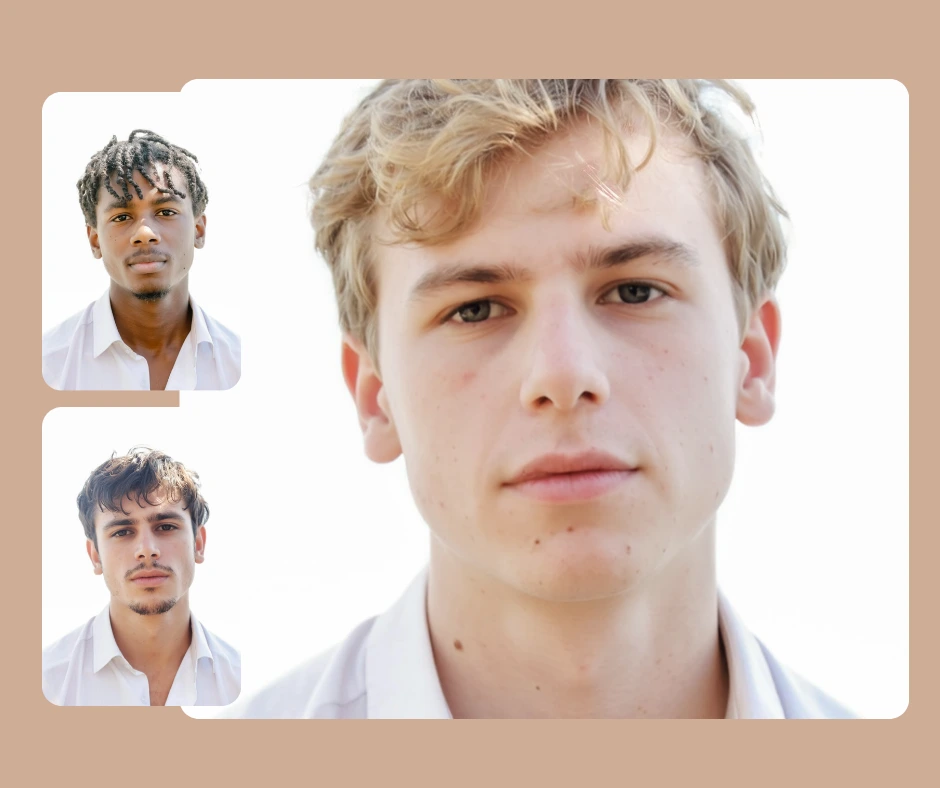
For creators and businesses seeking professional grade face changing technology, PiktID offers the perfect balance of realism, control, and privacy. With advanced photo realistic outputs, stored identity profiles, API automation, and built in anonymization, PiktID redefines what’s possible in digital content creation.
Start small — run a 10–20 image pilot and experience seam less swaps in minutes.
Try PiktID Swap today — claim 10 free credits and explore the future of face changing.
Explore more:
11. FAQ — Face Changing
Q1. What is face changing?
Face changing is the process of digitally replacing or modifying a person’s face in an image using AI. It allows you to swap, edit, or anonymize facial features while preserving expressions, lighting, and skin tone consistency. PiktID’s AI-powered Swap tool makes face changing simple and realistic for creators, brands, and researchers.
Q2. How accurate are AI face changing tools?
Modern AI face changing tools like PiktID use advanced neural rendering to match lighting, shadows, and angles for seamless swaps. The system ensures that every face replacement looks natural, even across complex poses or diverse lighting environments.
Q3. Can I use face changing for product catalogs or look books?
Yes, face changing can be used to maintain visual consistency in product catalogs or fashion lookbooks. With PiktID’s stored identity feature, you can apply the same model’s face across multiple outfits, ensuring a cohesive visual brand experience without repeated photo shoots.
Q4. Is face changing legal?
Face changing is legal when you have proper consent to use the original and target images. PiktID enforces strict Terms of Service to prevent misuse, ensuring that all image edits respect data protection and ethical usage standards.
Q5. How long do generated images stay online?
Images created using PiktID’s face changing tools are stored temporarily for editing and review. Users can download results or delete them anytime from their dashboard. PiktID’s system ensures secure data handling with auto-expiry for inactive content.
Q6. How do I avoid artifacts in face changing results?
For the best results, use high resolution images with clear lighting and natural expressions. Avoid heavy shadows or extreme angles. PiktID’s AI automatically corrects minor alignment issues, but proper source quality always enhances realism.
Q7. Can I anonymize faces for research or privacy use?
Yes, with PiktID’s Anonymize feature, you can replace real faces with AI-generated identities that retain emotion and pose while protecting privacy. This makes it ideal for academic, corporate, or UX research datasets.
Q8. What makes PiktID’s face changing different from regular face swap apps?
Unlike generic apps, PiktID’s face changing tool is designed for professional and creative work flows. It integrates advanced identity management (Store, Swap, and Anonymize) and supports photo realistic rendering suitable for fashion, branding, and marketing visuals.
Q9. Can I integrate face changing into my workflow or platform?
Yes, PiktID provides API and studio integrations for teams or developers looking to automate face changing at scale. This includes bulk processing, stored identities, and catalog wide face swaps with consistent quality.
Q10. Where can I try PiktID’s face changing tools?
You can start using PiktID’s AI-powered face changing tools at studio.piktid.com. New users receive 10 free credits to experiment with Swap, Anonymize, and other AI imaging features.

